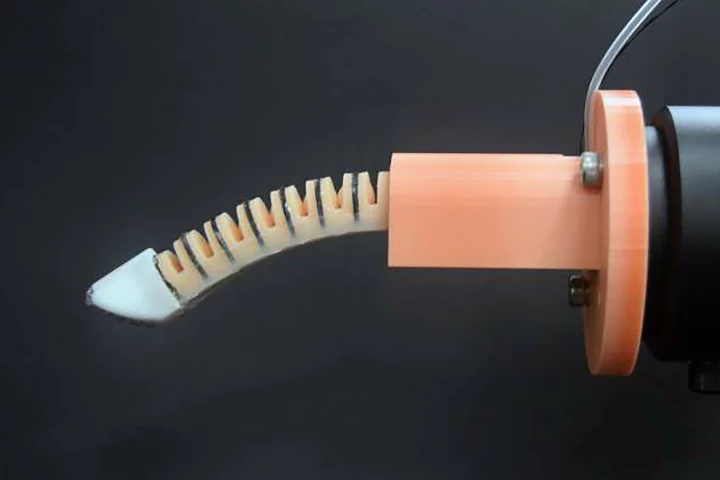Soft Robotics
-
For the first time, engineers have digitally recreated the complex muscular architecture of the octopus arm and its unique movements involving around 200 muscles, which opens the door to developing soft robotics with unprecedented dexterity.
-
Various groups are now growing baby corals for transplantation into the world's disappearing reefs, but they need a hand. A new robotic hand has been created to help, by carefully transferring the li'l corals between tanks as they grow up.
-
Researchers have developed an ultrasensitive, human-like robotic ‘finger’ capable of safely performing routine physical examinations like a medical doctor would. They say the ‘robodoctor’ could be seen in medical clinics soon.
-
Autonomous vehicles are said to be safer than human drivers – but would you trust a mushroom behind the wheel? A new kind of “biohybrid” robot moves in response to signals from the nervous system of a fungus.
-
Formless 'slime' robots that shape-change to complete complex tasks – it sounds like science fantasy. However, MIT researchers have developed a machine-learning technique that brings shape-changing soft robots a step closer to reality.
-
If a soft-bodied robot uses rigid actuators to move its body, then it isn't really soft now, is it? An experimental new caterpillar-inspired bot gets around that conundrum by using soft, collapsible origami segments to squirm and steer its way into our hearts.
-
Most humanoid robots pick things up with their hands – but that's not how we humans do it, particularly when we're carrying something bulky. We use our chests, hips and arms as well – and that's the idea behind Toyota's new soft robot.
-
Researchers have overcome a challenge in robotics by developing a sensor that can slide over braille, accurately reading it at twice human speed. The tech could be incorporated into robot hands, providing fingertip sensitivity comparable to humans.
-
Soft robotic devices often need to sense both mechanical deformation and changes in temperature, requiring multiple integrated sensors. ChromoSense technology, however, combines both functions in one simple, robust, color-changing device.
-
Pleurocystitid was a marine organism that existed almost 450 million years ago, long before the first dinosaurs. Scientists have now built a soft-bodied robotic replica of it, which could inspire new methods of locomotion for future robots.
-
In order to function safely alongside human workers, robotic arms shouldn't be hard and unyielding. An experimental new arm was designed with that fact in mind, as it mimics soft n' squishy elephant trunks and octopus tentacles.
-
If a robot is trying to traverse rugged, irregular terrain, it's limited by having just one body shape. The Tetraflex robot was designed with this fact in mind, as it can change shape to adopt different modes of locomotion.
Load More











